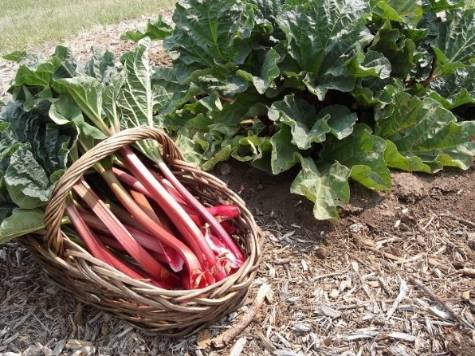Harvesting Rhubarb

Rhubarb is a common perennial crop grown for its large, thick leafstalks. One of the most common reasons for the lack of success in increasing rhubarb is harvesting too much or for too long. Since rhubarb is a perennial crop, it draws on the food reserves stored the year before for vigor and strength to leaf out and grow in the spring. An established rhubarb planting can be harvested for approximately 8 weeks and begins as soon as the stalks are large enough to use. Harvest only the largest and best stalks. They should break off easily if pulled slightly to one side.
After the harvest season, leave the stalks that develop to grow so the plant can store food for the next season. Following harvest, it’s also important to fertilize the rhubarb with a fertilizer mainly containing nitrogen, such as nitrate or soda. Other high-nitrogen fertilizers can be used; follow the directions on the label. As the plants start leafing, a fertilizer application should have been made in the spring. If the rhubarb begins to make a seed stalk, remove it so the plant puts more energy into food reserves.
Summer is the wrong time to rejuvenate a rhubarb bed; however, rhubarb should be rejuvenated every 5 to 10 years, or if productivity has been decreasing over the last few years, it is time to consider rejuvenating the bed in the early spring. You can dig up and divide the crowns into sections and then replant. Remember not to harvest the first year after rejuvenating.

Have questions? Contact our office where our Horticulture Extension Agent will assist you with questions.
Phone: (316) 321-9660
Email: callae@ksu.edu